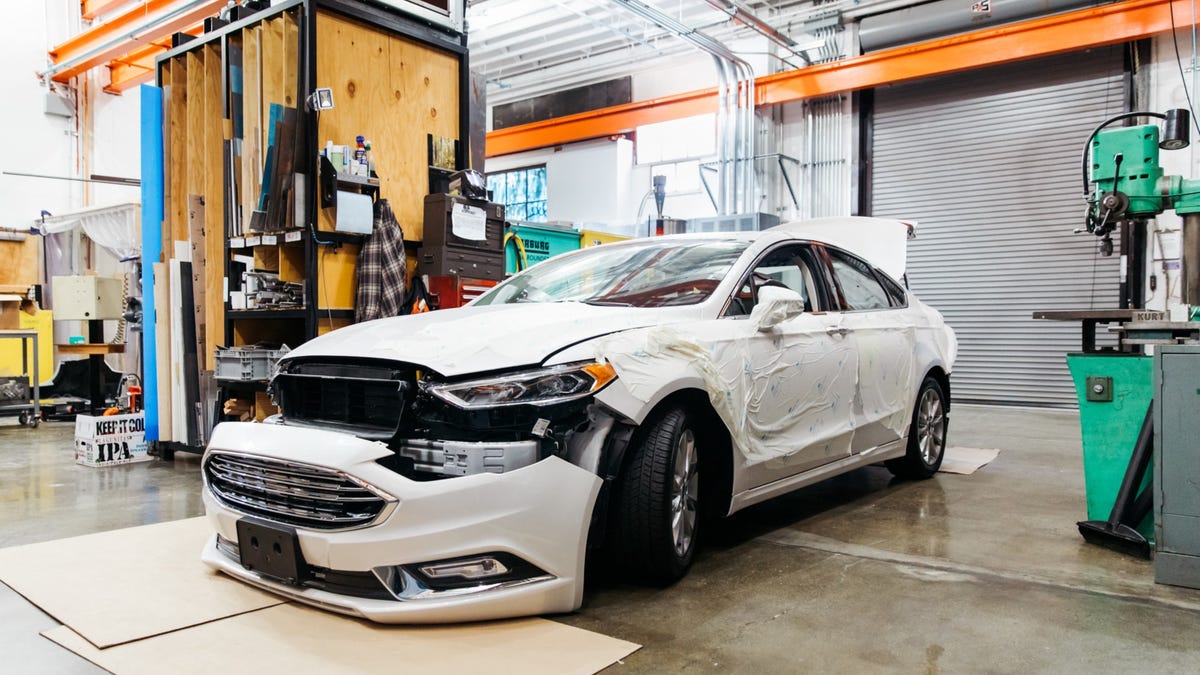Here's how startup Voyage built its first autonomous Ford Fusion
Bear in mind, this is only the hardware side. There's still plenty of work left to do.

Voyage, a spinoff of online education startup Udacity, wants to build self-driving taxis using mass-production vehicles. Here's how the group built its first one.
Instead of churning through money developing a car from the ground up, Voyage wants to retrofit cars that are already on sale. Its first, Homer, is a Ford Fusion outfitted with two wide-angle cameras, four other cameras, multiple radar emitters and lidar -- and all the supporting hardware required to make it work.
Voyage's team commissioned a custom mount for its lidar system to ensure it was as secure as possible.
Whereas developing a new vehicle allows you to place sensors and cameras wherever you please, Voyage had to work around the Fusion's existing body panels. Like many other cars, the lidar is mounted high above the vehicle on a custom mount. Rear-facing radar was tucked behind the bumper for a clean look, but in order to have some design flexibility, Voyage went with a custom mount ahead of the front bumper.
Over the course of just three (!) days, Voyage's team put everything together. Of course, the car is far from ready, as hardware is just one step. The company is still hiring talented computer scientists to help program its self-driving taxi. Its website encourages folks to apply for positions in machine learning and robotics.
Voyage's eventual goal is to create a low-cost taxi service that requires zero other humans present in the vehicle, aside from the fare. Of course, development will still require a human to be present in the vehicle, so Voyage is also looking for safety drivers.
The startup might have the moxie to give this whole autonomy thing a go, but it's facing fierce competition. In California alone, it's going up against titans such as Uber, Waymo (owned by Google), Apple and a whole bunch of automakers, all of which have roughly the same goal -- get self-driving vehicles into consumers' hands. Head over to Voyage's blog post to check out more pictures and details from the assembly process.

